How to increase direct and alternating voltage
AC voltage boost
There are two ways to increase alternating voltage - use a transformer or an autotransformer. The main difference between them is that when using a transformer there is galvanic isolation between the primary and secondary circuits, but when using an autotransformer it is not.
Interesting! Galvanic isolation is the absence of electrical contact between the primary (input) circuit and the secondary (output) circuit.
Consider frequently asked questions. If you have come across the borders of our vast homeland and the power supply there differs from our 220 V, for example, 110 V, then to raise the voltage from 110 to 220 V, you need to use a transformer, for example, such as shown in the figure below:
It should be said that such transformers can be used "in any direction." That is, if the technical documentation of your transformer says “the voltage of the primary winding is 220V, the secondary is 110V” - this does not mean that it cannot be connected to 110V. Transformers are reversible, and if you apply the secondary winding, the same 110V - 220V or another increased value proportional to the transformation ratio will appear on the primary.
The next problem that many face is low voltage, It is especially often observed in private houses and in garages. The problem is related to poor condition and overload of power lines. To solve this problem - you can use LATR (laboratory autotransformer). Most modern models can both lower and smoothly increase the network settings.
Its diagram is shown on the front panel, and we will not dwell on explanations of the principle of action. LATRs are sold in different capacities, the one in the figure is approximately 250-500 VA (volt-amperes). In practice, there are models up to several kilowatts. This method is suitable for supplying a nominal 220 volts to a specific appliance.
If you need to cheaply raise voltage throughout the house, your choice is a relay stabilizer. They are also sold taking into account different capacities and the lineup is suitable for most typical cases (3-15 kW). The device is also based on an autotransformer. About, how to choose a voltage regulator for the house, we told in the article that we referred to.
DC circuits
Everyone knows that DC transformers do not work, then how to increase the voltage in such cases? In most cases, the constant is increased with throttlefield or bipolar transistor and PWM controller. In other words, this is called a transformerless voltage converter. If these three main elements are connected as shown in the figure below and a PWM signal is applied to the base of the transistor, then its output voltage will increase by a factor of Ku.
Ku = 1 / (1-D)
Also consider typical situations.
Let's say you want to make the keyboard backlight using a small segment of the LED strip. For this, the power of the charger from the smartphone (5-15 W) is quite enough, but the problem is that its output voltage is 5 Volts, and the common types of LED strips work from 12 V.
Then how to increase the voltage on the charger? The easiest way to upgrade with a device such as "dc-dc boost converter" or "pulse boost DC-DC converter."
Such devices can increase the voltage from 5 to 12 volts, and are sold both with a fixed value and adjustable, which will allow in most cases to rise from 12 to 24 and even up to 36 volts. But note that the output current is limited by the weakest element of the circuit, in the situation under discussion - the current on the charger.
When using the specified board, the output current will be less than the input one as many times as the voltage at the output rises, without taking into account the efficiency of the converter (it is in the region of 80-95%).
Such devices are built on the basis of chips MT3608, LM2577, XL6009. With their help, you can make a device for checking the regulator relay not on the car generator, but on the desktop, adjusting the values from 12 to 14 Volts. Below you see a video test of such a device.
Interesting! DIY enthusiasts often ask the question “how to increase the voltage from 3.7 V to 5 V to make a DIY power bank on lithium batteries?”. The answer is simple - use the FP6291 converter board.
On such boards with the help of silk-screen printing, the purpose of the contact pads for connection is indicated, so you will not need a circuit.
Also, a frequently occurring situation is the need to connect a device to a 220V car battery, and it happens that you really need to get 220V in the country. If you do not have a gas generator, use a car battery and an inverter to increase the voltage from 12 to 220 Volts. A model with a power of 1 kW can be bought for $ 35 - this is an inexpensive and proven way to connect a 220V drill, grinder, boiler or refrigerator to a 12V battery.
If you are a truck driver, the above inverter will not suit you, due to the fact that there are likely 24 Volts in your on-board network. If you need to raise the voltage from 24V to 220V - then pay attention to this when buying an inverter.
Although it is worth noting that there are universal converters that can operate on 12 and 24 volts.
In cases where you need to get a high voltage, for example, raise from 220 to 1000V, you can use a special multiplier. Its typical layout is shown below. It consists of diodes and capacitors. You will get a constant current output, keep this in mind. This is the Latour-Delon-Grenasher doubler:
And this is the design of the asymmetric multiplier (Cockcroft-Walton).
With it, you can increase the voltage by the desired number of times. This device is built in cascades, the number of which depends on how many volts you get at the output. The following video describes the operation of the multiplier.
In addition to these circuits, there are many others, the diagrams of the quadruple, 6- and 8-fold multipliers that are used to increase the voltage are shown below:
In conclusion, I would like to recall safety measures. When connecting transformers, autotransformers, as well as working with inverters and multipliers, be careful. Do not touch live parts with bare hands. Connections should be made when the power is off from the device, and their work should be avoided in humid rooms with the possibility of water or splashing.Also, do not exceed the current declared by the manufacturer for the current of the transformer, converter or power supply if you do not want it to burn out. We hope that the tips provided will help you increase the voltage to the desired value! If you have questions, ask them in the comments under the article!
Surely you do not know:

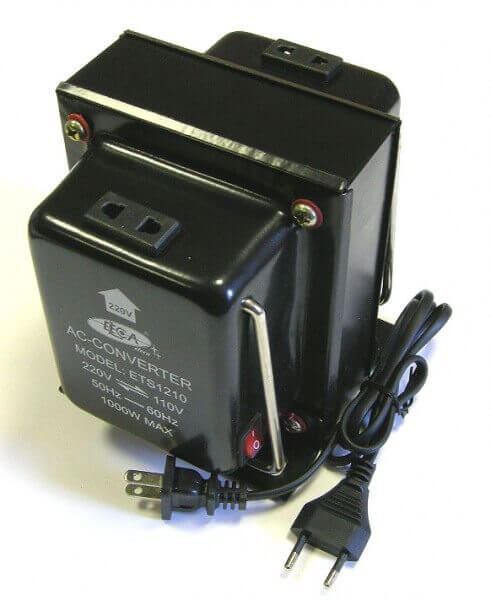
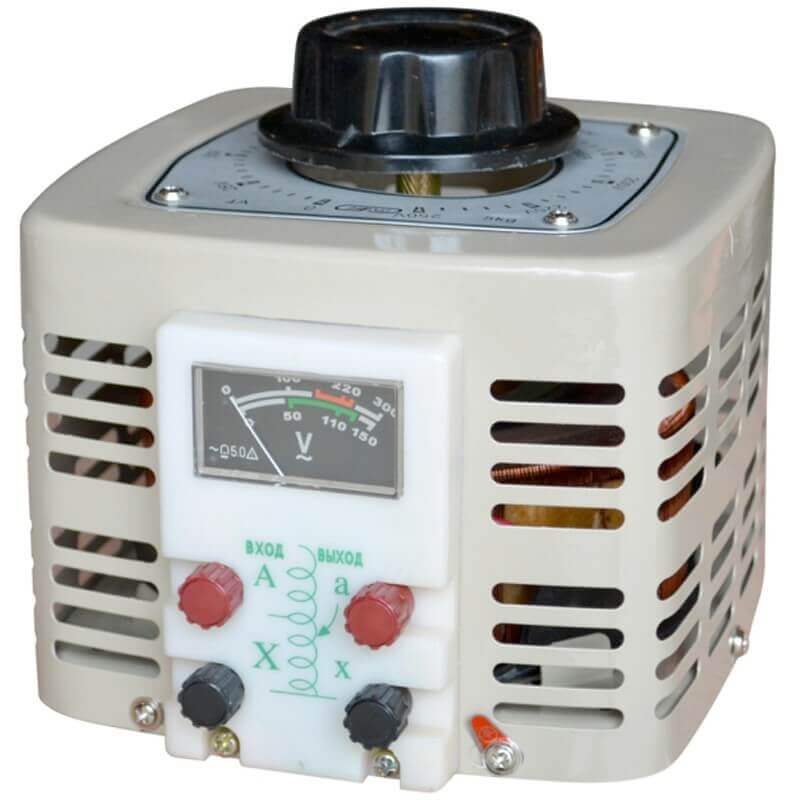
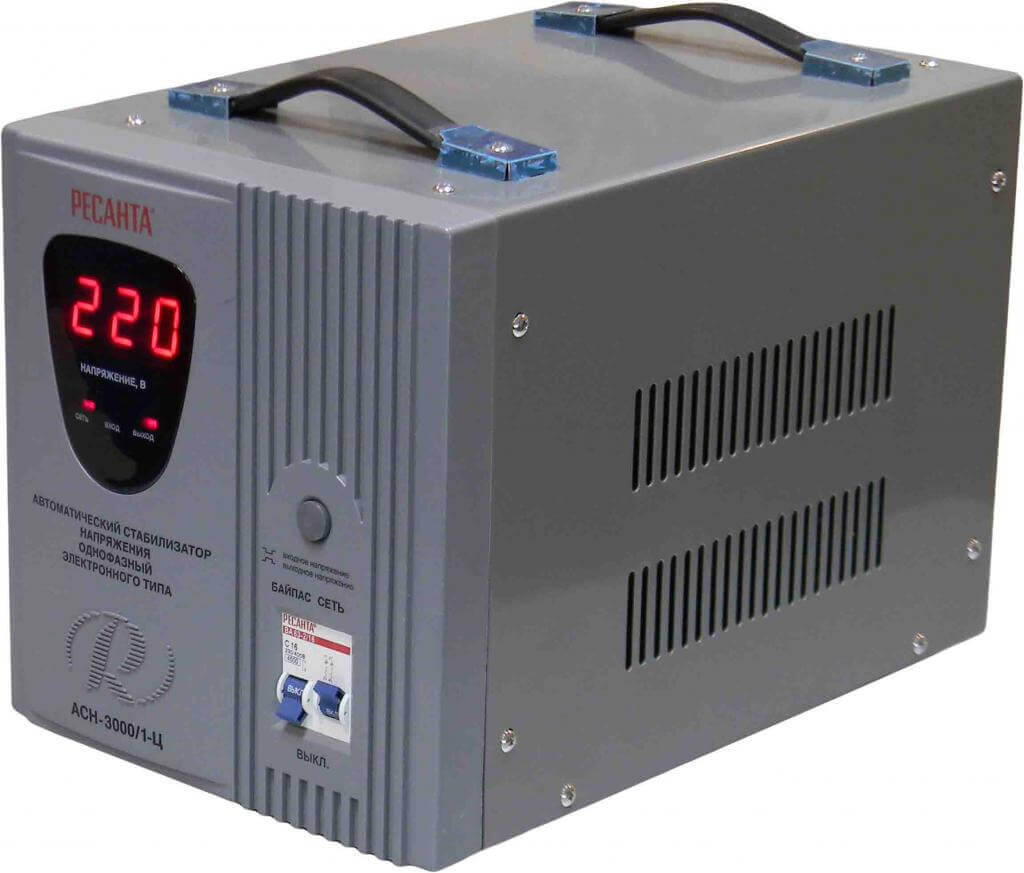



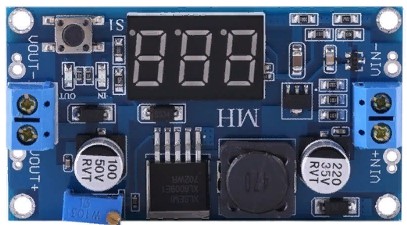

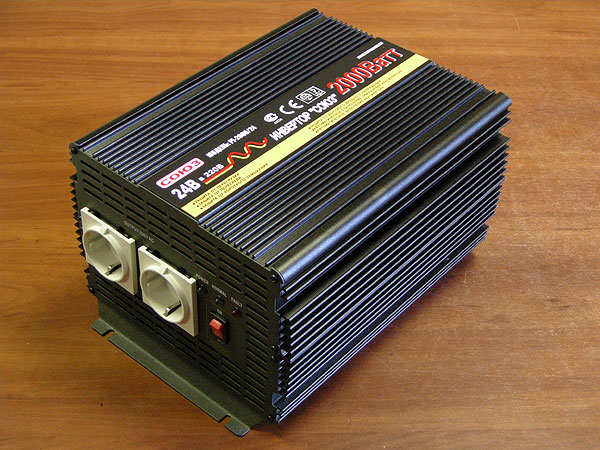
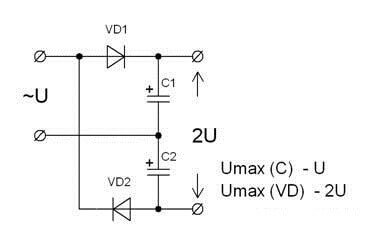
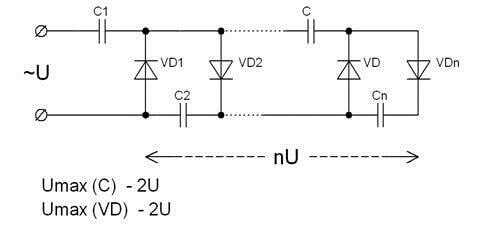
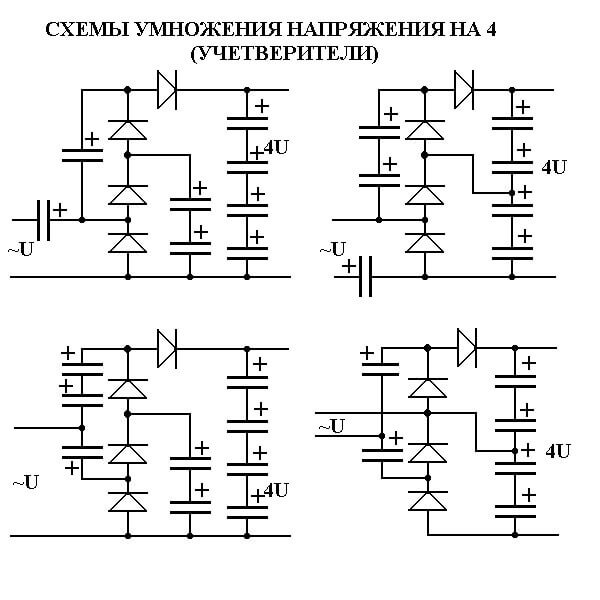
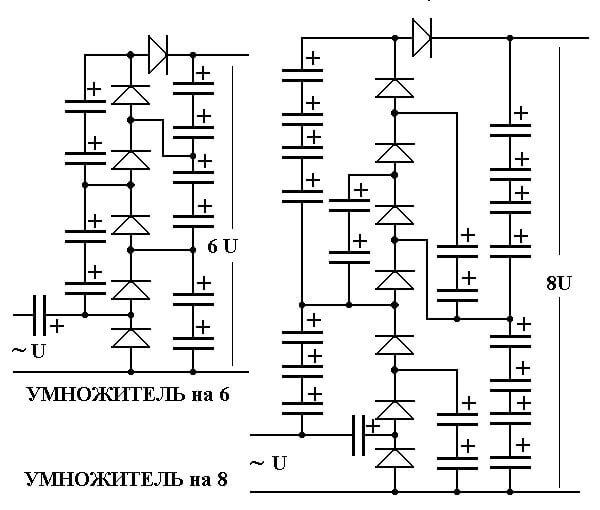






I have an inverter with a modified sine wave that does not want to start a 700-watt compressor. a question. Is it possible to correct the sine wave with a 700-watt inductor and start the compressor.
inverter output power?
Hello
I want to install solar panels and connect them directly to the home wiring How can I convert the direct current from them to 220 volts? I understand that the current will be as long as the sun is thanks
PC If possible, reply to the mail
Yes, no need to eat constant everything will work and so dial 220 panels and that's it